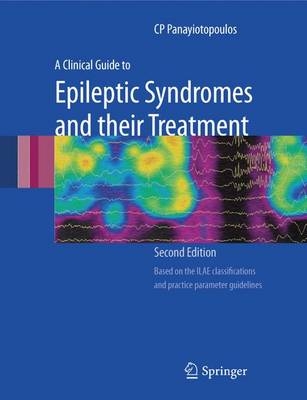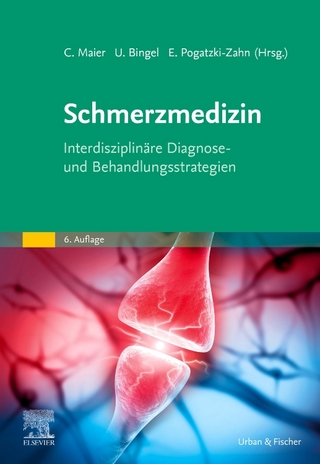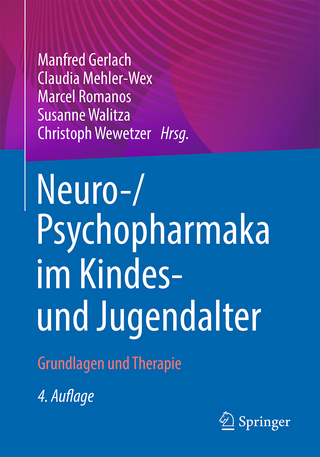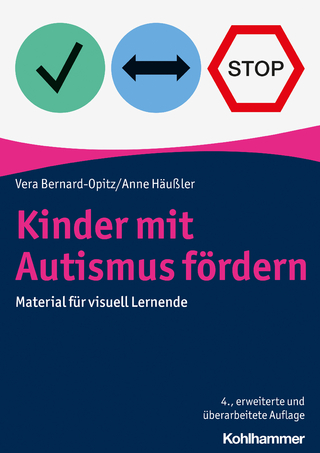
A Clinical Guide to Epileptic Syndromes and Their Treatment
Springer London Ltd (Verlag)
978-1-84628-643-8 (ISBN)
- Titel ist leider vergriffen;
keine Neuauflage - Artikel merken
A disorder which affects 4 percent of children and 1-2 percent of the general population, epilepsy is one of the most common neurological disorders. The original edition of C.P. Panayiotopoulos' guide proved to be the only one of its kind, covering many important aspects of diagnosis and treatment. Due to the continued advances being made in the subject, a second edition is now due. The text includes detailed diagnostics, concise descriptions of syndromes, a wealth of practical tips, and is supported by useful tables to enable clear diagnoses. Building on the sell-out success of the first edition, this thorough revision reflects the latest report of the ILAE classification core group and the significant progress made in the diagnosis, classification and treatment of the epilepsies. This new edition is indispensable reading for all those who care for patients with epileptic seizures.
Chrysostomos Panayiotopoulos is an internationally renowned leader and expert in the field of neurology. He has worked for over 15 years as a Consultant in Clinical Neurophysiology and Epilepsies at St. Thomas' Hospital in London, UK. In addition to this, he holds several honorary titles including Honorary Senior Lecturer at Guys, Kings and St. Thomas' Medical school, Honorary Consultant in Paediatric Epileptology at Guy's Department of Paediatric Neurology, London. He has also been an invited professor to Harvard University and the University of Western Australia, where he was appointed Honorary Director of the Department of Neuropathology. Dr. Panayiotopoulos has researched prolifically, investigating the clinical and neurophysiological investigations of the muscles, peripheral and central nervous system, with a particular focus on epilepsy. Moreover he has successfully secured more than a quarter of a million pounds of research funding. Dr Panayiotopoulos has been an active contributor to a number of highly established peer-reviewed journals. He has written over 136 articles in English, in journals such as the Lancet, Brain, Neurology, Annals of Neurology and Archives of Neurology to name but a few. These papers have been cited more than 1000 times in leading journals such as the Lancet, Nature, Neurology and Muscle and Nerve. He has also published over 50 articles in Greek. He has been the invited author of over 44 chapters in neurology books. He has also sat on the editorial board of "Annals of Saudi Medicine" and acted as a reviewer for: "Brain", "Journal of Neurology, Neurosurgery and Psychiatry", "Muscle and Nerve", "Epilepsia", "Lupus", "Journal of Electroencephalography and Clinical Neurophysiology", "Epilepsy Research", and "Seizure". Moreover his work on establishing the syndromic diagnosis of epilepsies and the appropriate video-EEG methodology for their diagnosis, has been regarded by some as ground breaking and he is recognised as one the leading authorities on epilepsy. He was appointed as one of the 12 members of the Commission on Classification and Terminology of the International League Against Epilepsy (ILAE) and subsequently as a key advisory member. Dr. Panayiotopoulos is now Consultant emeritus in the Department of Clinical Neurophysiology and Epilepsies at St. Thomas' hospital, London and also has a consultancy with USB pharma, Brussels, Belgium. He is married with two children. Author of: Benign childhood partial seizures and related epileptic syndromes London: John Libbey and Co. (1999)) Early-onset benign childhood occipital seizure susceptibility syndrome: a syndrome to recognise. Epilepsia 1999: 40:621-630
1 - General aspects of epilepsies What is epilepsy? Definitions Making the correct diagnosis in epilepsies The ILAE classification of epileptic seizures and epileptic syndromes Epidemiology of epilepsies 2 - Epileptic seizures and their classification The formal definition of epileptic seizures Classification of epileptic seizures Generalised epileptic seizures Focal epileptic seizures Reflex epileptic seizures 3 - Status epilepticus Generalised tonic--clonic status epilepticus Generalised tonic status epilepticus Generalised myoclonic status epilepticus Absence status epilepticus Focal status epilepticus Treatment of status epilepticus 4 - Imitators of epileptic seizures Main types of epileptic seizures and their imitators Syncopal attacks imitating epileptic seizures Psychogenic NEPEs imitating epileptic seizures Non-epileptic paroxysmal movement disorders imitating epileptic seizures Non-epileptic severe amnesic and confusional attacks imitating epileptic seizures NEPEs occurring during sleep and sleep disorders Subjective non-epileptic paroxysmal symptoms imitating simple focal seizures Migraine, migralepsy, basilar migraine with EEG occipital paroxysms and diagnostic errors 5 -- Epileptic syndromes and their classification ILAE definitions of epileptic syndromes 1989 ILAE classification of epileptic syndromes Syndromic classification of the new diagnostic ILAE scheme 6 - EEG and brain imaging EEG in the diagnosis and management of epilepsies Brain imaging in the diagnosis and management of epilepsies 7- Principles of therapy in the epilepsies AED prophylactic treatment Surgery for epilepsies Vagus (or vagal) nerve stimulation Ketogenic diet Corticosteroids in the treatment of childhood epilepsies 8 - Neonatal epileptic seizures and neonatal epileptic syndromes Neonatal epileptic seizures Neonatal epileptic syndromes Benign familial neonatal seizures Benign neonatal seizures (non-familial) Early myoclonic encephalopathy Ohtahara syndrome 9 - Idiopathic epileptic seizures and syndromes in infancy Febrile seizures Epilepsy with febrile seizures plus Benign infantile seizures Myoclonic epilepsy in infancy 10 - Epileptic encephalopathies in infancy and early childhood West syndrome Dravet syndrome Lennox--Gastaut syndrome Landau--Kleffner syndrome Epilepsy with continuous spikes and waves during slow-wave sleep Myoclonic encephalopathy in non-progressive disorders Atypical benign partial epilepsy of childhood Hypothalamic (gelastic) epilepsy 11 - Severe neocortical epileptic syndromes in infancy and childhood Kozhevnikov--Rasmussen syndrome Migrating focal seizures of infancy Hemiconvulsion--hemiplegia epilepsy 12 - Benign childhood focal seizures and related epileptic syndromes Benign childhood epilepsy with centrotemporal spikes Panayiotopoulos syndrome Idiopathic childhood occipital epilepsy of Gastaut Other phenotypes of BCSSS Benign childhood seizure susceptibility syndrome: a unified concept of BCSSS Benign (isolated) focal seizures of adolescence Management of benign childhood focal seizures 13 - Idiopathic generalised epilepsies Syndromes of IGE recognised by the ILAE Epilepsy with myoclonic--astatic seizures Childhood absence epilepsy Epilepsy with myoclonic absences Juvenile absence epilepsy Juvenile myoclonic epilepsy Epilepsy with GTCSs only Other probable syndromes of IGE to consider Autosomal dominant cortical tremor, myoclonus and epilepsy AED treatment of IGEs 14 - Familial (autosomal dominant) focal epilepsies Autosomal dominant nocturnal frontal lobe epilepsy Familial (autosomal dominant) temporal lobe epilepsy Familial mesial temporal lobe epilepsy Familial lateral temporal lobe epilepsy Familial focal epilepsy with variable foci Other possible familial (autosomal dominant) focal epilepsies not yet recognised 15 - Symptomatic and cryptogenic (probably symptomatic) focal epilepsies Temporal lobe epilepsies Mesial TLE with hippocampal sclerosis MTLE defined by specific aetiologies other than hippocampal sclerosis Frontal lobe epilepsies Epilepsia partialis continua of Kozhevnikov Parietal lobe epilepsies Occipital lobe epilepsies AED therapy of focal epilepsies 16 - Reflex seizures and reflex epilepsies Visually induced seizures and epilepsies Photosensitivity, epileptic seizures and epileptic syndromes Idiopathic photosensitive occipital lobe epilepsy Jeavons syndrome Pattern-sensitive epilepsy Fixation-off sensitivity Complex reflex epilepsies Seizures induced by thinking and praxis Primary reading epilepsy Startle epilepsy Hot water epilepsy 17 - Diseases frequently associated with epileptic seizures Progressive myoclonic epilepsies Unverricht disease Lafora disease Neuronal ceroid lipofuscinoses Sialidoses (types I and II) Mitochondrial encephalopathy with ragged-red fibres Dentatorubral-pallidoluysian atrophy Angelman syndrome Management of myoclonus New antimyoclonic AEDs in development 18- Pharmacopoeia: Prophylactic anti-epileptic drugs
| Erscheint lt. Verlag | 30.7.2007 |
|---|---|
| Zusatzinfo | 100 colour illustrations, 50 colour tables, biography |
| Verlagsort | England |
| Sprache | englisch |
| Maße | 246 x 189 mm |
| Einbandart | gebunden |
| Themenwelt | Medizin / Pharmazie ► Medizinische Fachgebiete ► Neurologie |
| ISBN-10 | 1-84628-643-3 / 1846286433 |
| ISBN-13 | 978-1-84628-643-8 / 9781846286438 |
| Zustand | Neuware |
| Haben Sie eine Frage zum Produkt? |
aus dem Bereich


